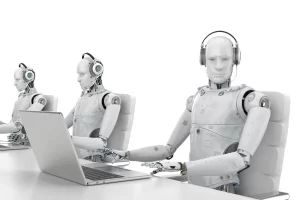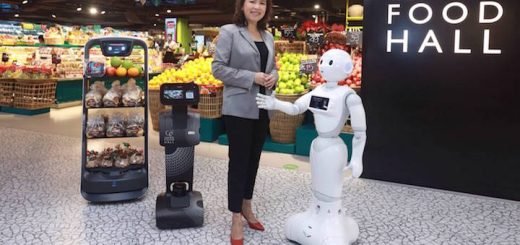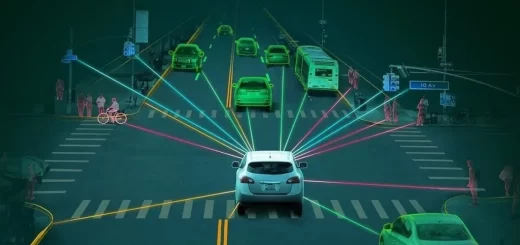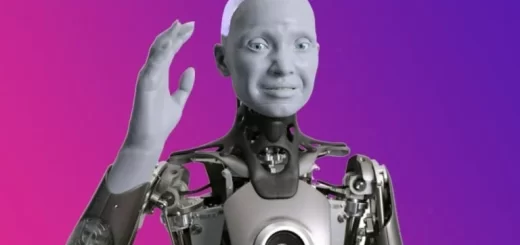Humanoid Robots function, What is a humanoid robot? and Is Humanoid an AI?
Humanoid robots are machines designed to resemble the human body in appearance and are designed to mimic human actions. They come in various shapes and sizes, but typically they have a torso, head, two arms, and two legs. Some humanoid robots are designed to look like humans, with realistic skin, hair, and facial features.
Humanoid Robot function
Humanoid robots are engineered to imitate human expressions, interactions, and movements. These robots are often outfitted with a variety of cameras, sensors, and artificial intelligence (AI) to allow them to navigate their surroundings and interact with people. There are many different functions that humanoid robots can perform:
Interaction and Assistance: These robots are designed to interact with humans naturally. They can be used in customer service, education, healthcare, and other fields where human-robot interaction is beneficial. For example, some humanoid robots are used as receptionists in hotels, while others are used to provide companionship to the elderly or disabled.
Manipulation and Mobility: These robots are designed to perform tasks that require dexterity and mobility. They can be used in manufacturing, logistics, and other fields where robots need to be able to move around and manipulate objects. Some humanoid robots are used to assemble cars on factory assembly lines, while others are used to deliver packages in warehouses.
Research and Development: These robots are used to study human movement and cognition. They can be used to develop new technologies for robotics and other fields, some humanoid robots are used to study how humans walk and run, while others are used to develop new methods of artificial intelligence.
Manufacturing and assembly: Humanoid robots can be used in factories to perform tasks such as welding, painting, and assembly. They can be more precise and efficient than human workers, and they can work in dangerous environments that would be unsafe for humans.
Humanoid robots can be used to automate tasks in factories and assembly lines. They can be programmed to perform repetitive tasks quickly and accurately, which can help to improve productivity. Their advanced limbs and sensors give them dexterity that surpasses most non-humanoid robots, allowing them for more intricate tasks.
Service industries: Humanoid robots can be used in a variety of service industries, such as healthcare, hospitality, and retail, they can be used as nurses or aides in hospitals, as waiters or waitresses in restaurants, or as customer service representatives in stores.
Search and rescue: Humanoid robots can be used in search and rescue operations, such as after a natural disaster. They can be used to enter dangerous or collapsed buildings to find survivors.
Education and entertainment: Humanoid robots can be used in education and entertainment, they can be used as tutors or teachers, or they can be used to perform in shows or movies. Humanoid robots can be used in schools to teach children about science, technology, engineering, and mathematics (STEM). They can also be used in museums and theme parks to entertain visitors.
Perform tasks in hazardous environments: Since humanoid robots can be designed to look and move like humans, they can be sent into dangerous environments to perform tasks that would be too risky for people, they can be used to inspect nuclear power plants or clean up after oil spills.
Provide care and companionship: Humanoid robots can be used to provide care and companionship to people who are elderly, disabled, or sick. They can help with tasks such as bathing, dressing, and eating. They can provide social interaction and emotional support.
Perform research and development: Humanoid robots can be used to conduct research in a variety of fields, such as artificial intelligence, robotics, and biomechanics. They can be used to test new technologies and to develop new products and services.
Importance of Humanoid Robots
Their human-like form allows them to interact with the world in a way non-humanoid robots can’t. They can operate tools, manipulate objects, and navigate environments designed for humans. They can safely perform tasks in dangerous or unpleasant environments like handling radioactive materials or exploring collapsed buildings.
Their advanced limbs and sensors give them dexterity that surpasses most non-humanoid robots, allowing them for more intricate tasks. Their human-like appearance can make them easier for people to interact with and accept, especially in caregiving or customer service roles.
Humanoid robots can be sent into dangerous or inhospitable places for humans, like disaster zones, radioactive areas, or deep space exploration. Their human-like appearance can play a role in social situations, providing care for the elderly, assisting with therapy, or acting as companions.
Risks of Humanoid Robots
Building a robot that replicates human movement and cognition is complex and expensive. Compared to humans, current humanoid robots still lack the fine motor skills and adaptability for many everyday tasks. Malfunctioning or poorly designed humanoid robots could pose safety risks to humans, especially in situations requiring delicate handling or close interaction.
Their human-like form raises safety concerns, especially when interacting with humans nearby. Programming needs to be extremely robust. As these robots become more sophisticated, there’s a fear they could replace human jobs in various sectors, leading to unemployment.
Developing, maintaining, and programming these robots requires significant investment. The development of humanoid robots raises ethical questions about artificial intelligence and the potential blurring of lines between humans and machines. Their creation requires advanced technologies in engineering, AI, and material science.
Current humanoid robots may struggle with tasks requiring fine motor skills or quick adaptation to unforeseen situations, limiting their real-world application. They still can’t match human adaptability and problem-solving skills. Their movements can be cumbersome and imprecise compared to natural human motion.
The “Uncanny Valley”: Their human-like appearance can be unsettling because it falls short of being perfectly human. This can cause people to feel discomfort or distrust. As humanoid robots become more sophisticated, there’s a concern they may replace human workers in some industries, leading to unemployment and economic disruption.
You can follow Science Online on Youtube from this link: Science online
Sophia robot review, features, use, advantages and disadvantages
Robot teachers use, types, advantages and disadvantages
Advantages and disadvantages of using robots in our life
Automation in manufacturing uses, advantages and disadvantages
Humanoid robots use, types, risks, advantages and disadvantages
Pepper robot review, features and What can Pepper do for your business?
Boston Dynamics Atlas review, advantages and features, How does Atlas robot work?




